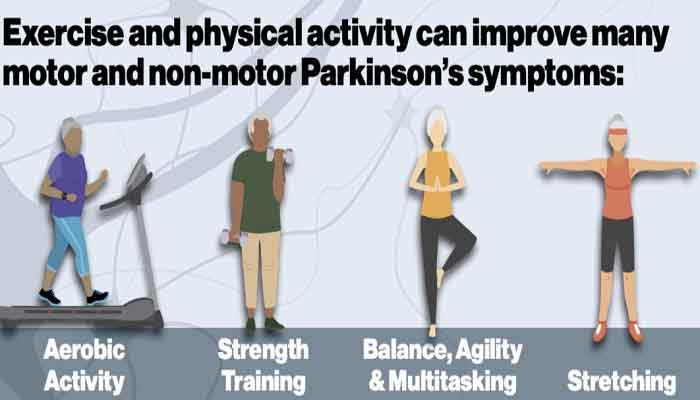
An international group of researchers has recently discovered that a rigorous exercise program may potentially slow the progression of Parkinson’s disease – giving way for non-pharmaceutical approaches to helping with symptoms and treating the condition.
Washington.- Neuroscientists from the Faculty of Medicine of the Catholic University, Rome Campus, and the A. Gemelli IRCCS Polyclinic Foundation found that intensive exercise could slow the course of Parkinson’s disease and described the biological mechanisms. The finding could pave the way for new non-drug approaches.
The study “Intensive exercise ameliorates motor and cognitive symptoms in experimental Parkinson’s disease by restoring striatal synaptic plasticity” is published in the journal Science Advances. The research was led by Catholic University, Rome Campus and A. Gemelli IRCCS Polyclinic Foundation, in collaboration with several research institutes: the San Raffaele Telematic University Rome, CNR, TIGEM, University of Milan, and IRCCS San Raffaele, Rome.
READ FULL ARTICLE
Intensive exercise ameliorates motor and cognitive symptoms in experimental Parkinson’s disease by restoring striatal synaptic plasticity
“We have discovered a never observed mechanism, through which exercise performed in the early stages of the disease induces beneficial effects on movement control that may last over time even after training is suspended,” said corresponding author, Full Professor of Neurology at the Catholic University and director of the UOC Neurology at the University Polyclinic A. Gemelli IRCCS Paolo Calabresi.
“In the future, it would be possible to identify new therapeutic targets and functional markers to be considered for developing non-drug treatments to be adopted in combination with current drug therapies”, he added.
Previous work has shown that intensive physical activity is associated with increased production of a critical growth factor, the brain-derived neurotrophic factor (BDNF).
The authors were able to reproduce this phenomenon in response to a four-week treadmill training protocol in an animal model of early-stage Parkinson’s disease and to demonstrate, for the first time, how this neurotrophic factor determines the beneficial effects of physical activity in the brain.
The main effect observed in response to daily sessions of treadmill training is a reduction in the spread of pathological alpha-synuclein aggregates, which in Parkinson’s disease leads to the gradual and progressive dysfunction of neurons in specific brain areas (the substantia nigra pars compacta and the striatum – constituting the so-called nigrostriatal pathway), essential to motor control. (PL)






